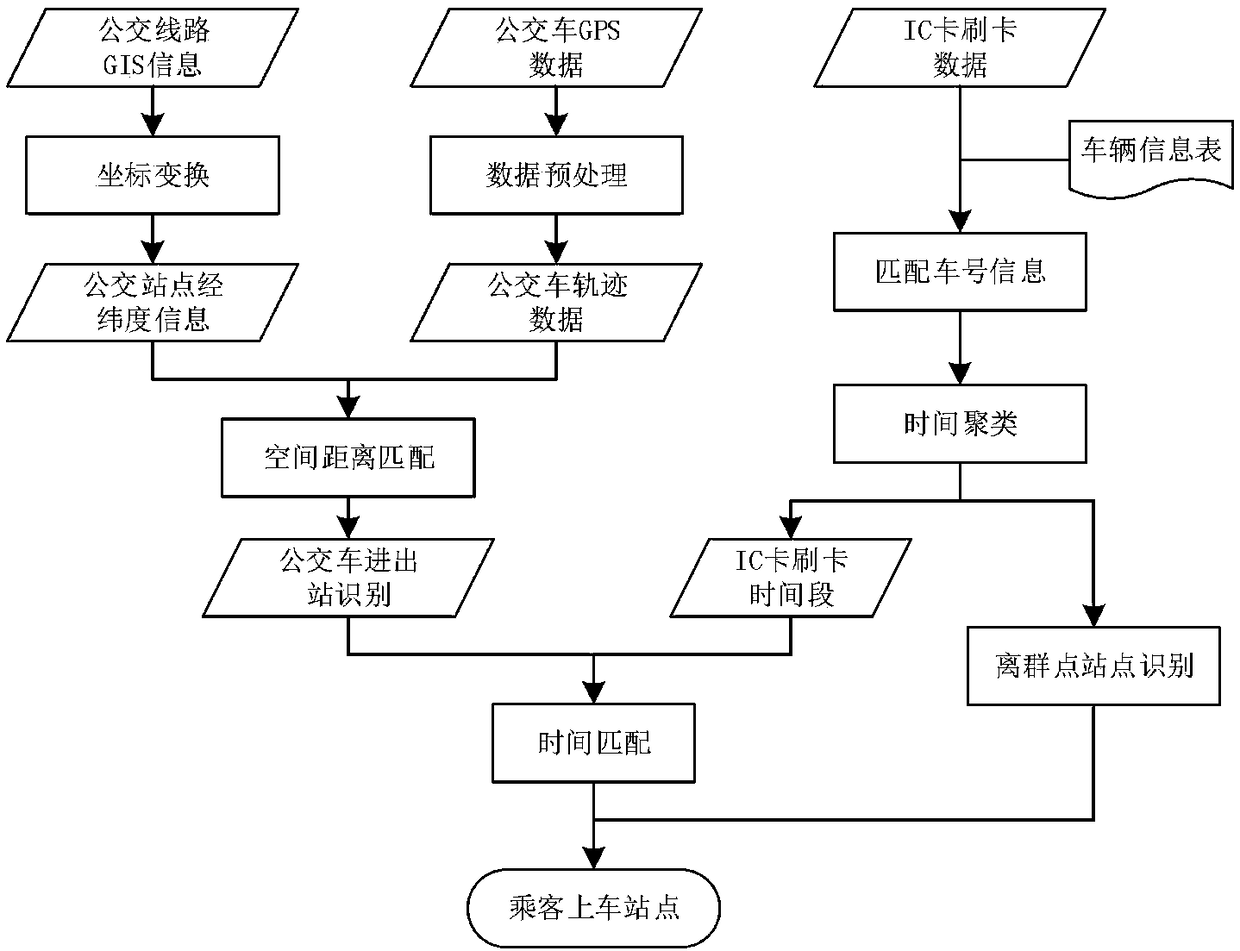Real-time recognition method for getting-off stations of bus passengers based on historical travel characteristics
An identification method and technology for buses, which are applied to traffic control systems, traffic control systems, instruments and other directions of road vehicles, can solve problems such as low accuracy, many factors affecting stations, and inability to obtain the location of passengers getting off, so as to improve identification The effect of high rate and high practical value
- Summary
- Abstract
- Description
- Claims
- Application Information
AI Technical Summary
Problems solved by technology
Method used
Image
Examples
Embodiment Construction
[0015] In order to illustrate the purpose, technical solutions and advantages of the present invention more clearly, the technical solutions in the embodiments of the present invention are clearly and completely described below in conjunction with the accompanying drawings. Obviously, the described embodiments are only part of the embodiments of the present invention, and Not all examples. Based on the embodiments of the present invention, all other embodiments obtained by persons of ordinary skill in the art without making creative efforts belong to the protection scope of the present invention.
[0016] Below in conjunction with accompanying drawing and specific embodiment the present invention will be further described:
[0017] Such as figure 1 Shown is the overall identification process of the present invention, a real-time identification method for public transport passengers getting off the bus station based on historical travel characteristics, which mainly includes t...
PUM
 Login to View More
Login to View More Abstract
Description
Claims
Application Information
 Login to View More
Login to View More - R&D
- Intellectual Property
- Life Sciences
- Materials
- Tech Scout
- Unparalleled Data Quality
- Higher Quality Content
- 60% Fewer Hallucinations
Browse by: Latest US Patents, China's latest patents, Technical Efficacy Thesaurus, Application Domain, Technology Topic, Popular Technical Reports.
© 2025 PatSnap. All rights reserved.Legal|Privacy policy|Modern Slavery Act Transparency Statement|Sitemap|About US| Contact US: help@patsnap.com



